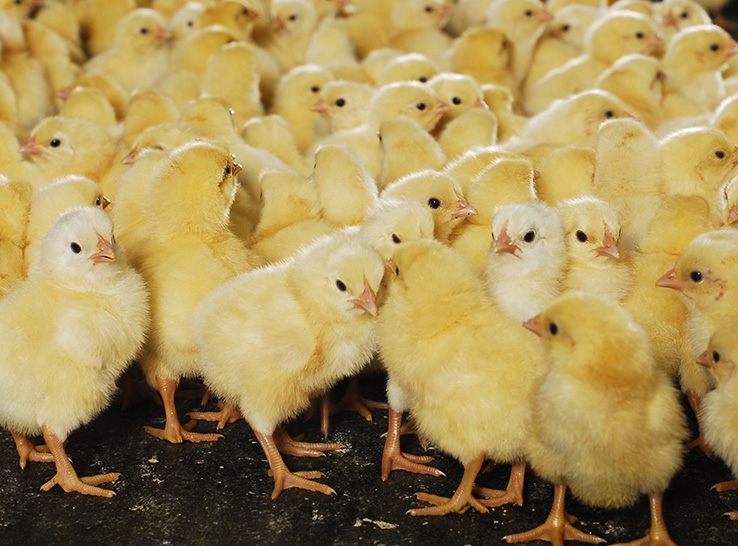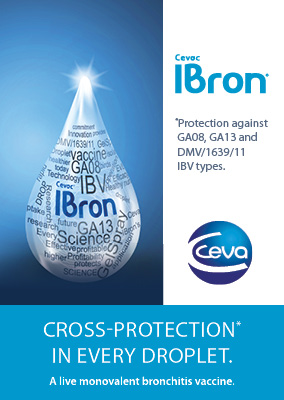By Kelli H. Jones, DVM, MAM, dACPV
Manager, Technical Services
Ceva Animal Health
 The commercial turkey industry has limited tools available for managing coccidiosis. This challenge is largely due to reports of increasing resistance of oocysts to currently available in-feed anticoccidials in many operations.1
The commercial turkey industry has limited tools available for managing coccidiosis. This challenge is largely due to reports of increasing resistance of oocysts to currently available in-feed anticoccidials in many operations.1
Consequently, turkey veterinarians and producers are increasingly turning to coccidiosis vaccines (oocysts consisting of live Eimeria spp.) and using them in a rotation with anticoccidials in the feed as a standard component in their prevention programs.
Here are four tips to help ensure success with coccidiosis vaccination.
1) Don’t contaminate your barn.
Veterinarians must exercise due diligence when selecting a vaccine. It is crucial to establish a solid baseline of which coccidia species are present in an operation and understand their current anticoccidial-sensitivity pattern.
Introducing a new species of cocci into a barn, whether through natural exposure or vaccination, is irreversible. Therefore, it is essential to avoid introducing pathogenic species not already present on a farm. This baseline assessment helps in selecting the most appropriate vaccine for the operation.
2) Identify species of interest.
Published data on the prevalence of the different species of coccidiosis in turkeys are limited. However, present reports out of Canada2 and the midwestern US,3 where most turkey flocks are concentrated, indicate that E. adenoeides (95% of flocks) and E. meleagrimitis (97.5% of flocks) are the predominant species.
In fact, less than half of the flocks investigated had a species outside of these two Eimeria species. Molecular tools to assess coccidia species in fecal samples4,5,6 enable veterinarians to identify which cocci species are cycling in their barns.
Using such tools, our laboratory only identified 2/33 (6%) US locations with detectable levels of E. gallopavonis. This information facilitates data-driven decisions for tailoring a coccidiosis-prevention program to specific needs.
3) Use vaccination to help restore anticoccidial sensitivity.
Anticoccidial sensitivity is perhaps the most significant factor influencing coccidiosis-prevention strategies. Researchers suggest that rotating drug-sensitive vaccine oocysts into a program can help re-seed barns with a more sensitive population of Eimeria.7,8,9
Anticoccidial-sensitivity testing can evaluate and monitor drug and vaccine strategies for controlling coccidiosis in commercial poultry operations.10,11
Such testing helps veterinarians and producers make informed changes to their programs based on oocyst-population sensitivity patterns and observe the benefits of rotating to a vaccine over time.
4) Review administration and uptake.
Application method is an important consideration when selecting a coccidiosis vaccine. Gel-droplet administration is thought to be superior to traditional water-spray application because the product doesn’t penetrate the down, allowing poults to more effectively preen without becoming wet or chilled.
Researchers at the University of Georgia have shown that gel-applied vaccines result in less variation in oocyst shedding compared to water spray, suggesting that gel droplets provide a more stable vehicle for vaccine delivery.12
They also found a loss of oocysts during water-spray vaccination, likely due to the shearing effects of the spray applicator. The success of coccidiosis vaccination begins at the hatcheries. The shift to gel-droplet application ensures better vaccination success, allowing turkey veterinarians to more effectively direct their coccidiosis-control programs.
Take-away messages
Effective coccidiosis control in turkeys requires a multi-faceted approach, including baseline species identification, regular sensitivity testing and optimal vaccine-administration methods.
By integrating these strategies, turkey producers can enhance their prevention programs and mitigate the impact of coccidiosis on their flocks.
For more information, contact Kelli Jones.
References
1 Bielke L. Coccidiosis Turkey Eimeria. Proceedings: Midwest Poultry Federation 2021.
2 Imai RK, Barta . Distribution and abundance of Eimeria species in commercial turkey flocks across Canada. MSc Thesis. Can Vet J. 2019;60:153-159.
3 Duff AF, Briggs WN, Bielke JC, McGovern KE, Trombetta M, Abdullah H, Bielke LR, Chasser KM. PCR identification and prevalence of Eimeria species in commercial turkey flocks of the Midwestern United States. Poult Sci. 2022;101(9):101995.
4 El-Sherry S, Ogedengbe ME, Hafeez MA, Sayf-Al-Din M, Gad N, Barta JR. Sequence-based genotyping clarifies conflicting historical morphometric and biological data for 5 Eimeria species infecting turkeys. Poult Sci. 2015;94:262-272.
5 Hafeez MA, Shivaramaiah S, Dorsey KM, Ogedengbe ME, El-Sherry S, Whale J, Cobean J, Barta JR. Simultaneous identification and DNA barcoding of six Eimeria species infecting turkeys using PCR primers targeting the mitochondrial cytochrome c oxidase subunit I (mtCOI) locus. Parasitol Res. 2015;114:1761-1768.
6 Snyder R, Guerin M, Hargis B, Imai R, Kruth P, Page G, Rejman E, Barta J. Exploiting digital droplet PCR and Next Generation Sequencing technologies to determine the relative abundance of individual Eimeria species in a DNA sample. Vet Parasitol. 2021;296:109443
7 Bielke L. Coccidiosis
8 Chapman H D, Jeffers TK. Vaccination of chickens against coccidiosis ameliorates drug resistance in commercial poultry production. Int J Parasitol Drugs Drug Resist. 2014;4:214-217.
9 Snyder RP, Guerin MT, Hargis BM, Kruth PS, Page G, Rejman E, Rotolo JL, Sears W, Zeldenrust EG, Whale J, Barta JR. Restoration of anticoccidial sensitivity to a commercial broiler chicken facility in Canada Poult Sci. 2021;100:663–674
10 Bielke L. Coccidiosis
11 Cervantes HM, McDougald LR. The use of anticoccidial sensitivity tests (ASTs) by the poultry industry. Avian Dis. 2022;66:1-5.
12 Albanese GA, Tensa LR, Aston EJ, Hilt DA, Jordan BJ. Evaluation of a coccidia vaccine using spray and gel applications. Poult Sci. 2018 May 1;97(5):1544-1553. doi: 10.3382/ps/pey011. PMID: 29462420; PMCID: PMC7107172.
Editor’s note: Content on Modern Poultry’s Industry Insights pages is provided and/or commissioned by our sponsors, who assume full responsibility for its accuracy and compliance.








